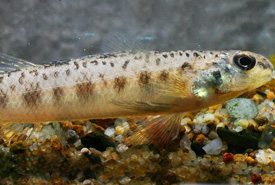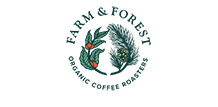Saint-Roch-de-Richelieu — Protecting the fish of the Richelieu River

Channel darter (Photo by J.R. Shute/Conservation Fisheries)
What breathes under water, lives in Quebec’s Richelieu River and is considered a species of special concern or officialy endangered species in Canada?
If you guessed any of these three vulnerable and one endangered fish species — channel darter, bridle shiner, river redhorse and copper redhorse — you’d be right.
The first three species are of special concern, according to the Committee on the Status of Endangered Wildlife in Canada, and vulnerable under the Quebec Act Respecting Threatened or Vulnerable Species (ARTVS). While the copper redhorse was officialy listed as an endangered species in 2007, it is protected by Canada's Species at Risk Act. Their populations have suffered from the effects of water runoff and a lack of suitable habitat. The Nature Conservancy of Canada (NCC) is hoping to address both of these threats.
Île Deschaillons is located in the Richelieu River in Saint-Roch-de-Richelieu, about 20 kilometres from Sorel-Tracy. NCC protects a 20-hectare area here, which supports a channel rich with aquatic plants, waterfowl and at-risk fish species.
This land securement adds to NCC’s conservation areas on the Richelieu River. NCC has also conserved 15 kilometres of riverfront between the Highway 35 bridge at Saint-Jean-sur-Richelieu and the Pierre-Étienne-Fortin wildlife sanctuary in the Chambly Basin. Other NCC-conserved lands in the area include the Jeanotte and Cerfs islands in St-Charles-de-Richelieu. These two properties, which form an archipelago of more 30 hectares, are the two last islands of the Richelieu River to be uninhabited. This area is important habitat for the survival of young copper redhorse.
Bridle shiner, channel darter, river redhorse and copper redhorse all require clean rivers in which to feed, lay their eggs and live. The aquatic grass beds along the Richelieu River are the perfect habitat for these species. It is therefore critical that they remain protected. All three species are sensitive to changes in water quality, including turbidity (the measure of the water's light-transmitting properties), flow, temperature and runoff. They rely on river beds with numerous aquatic plants and insect larvae to feed on.
The protection of this natural area doesn't only benefit these fish species. The property straddles the southern part of île Deschaillons and a riverbank area directly west. Île Deschaillons is recognized as a waterfowl gathering area. It provides refuge for Canada geese, wood duck, gadwall, American black duck and northern shoveler.
The island is also one of the last remaining intact woodlands along the Richelieu River, north of the Chambly Basin. The area shelters young shagbark hickory trees, a species listed as threatened or vulnerable under ARTVS.
NCC would like to thank the following donors who made this conservation project possible:
- Government of Canada - Natural Areas Conservation Program
- Ensemble pour la nature project of the Ministère de l’Environnement et de la Lutte contre les changements climatiques du Québec
- Normand Jacques - businessman, former landowner and former owner of the Domaine des Érables campground (1992–2012)
- U.S. Fish and Wildlife Service
- and other donors who wish to remain anonymous




